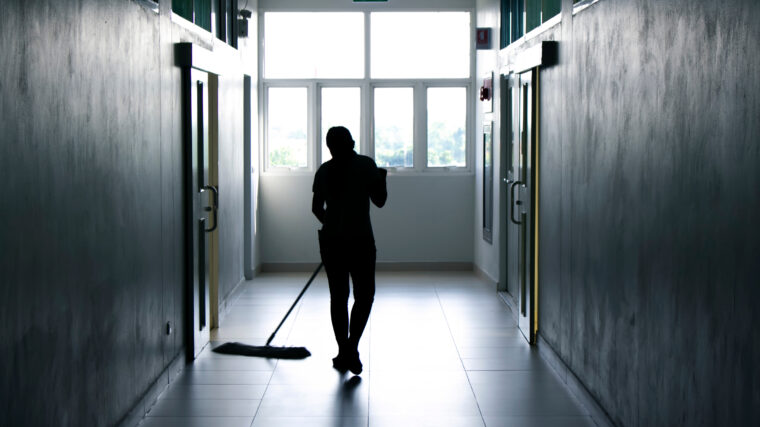The Commons’ Women and Equalities Committee has published a wide-ranging and detailed report on attitudes towards women and girls in educational settings.
Laying out laid out key recommendations for universities in tackling sexual violence both on and off campus – alongside recommendations for schools and colleges – it acknowledges that good work has been done in the sector on this issue.
But it also reminds us of what groups like Our Streets Now, NUS, and Revolt Sexual Assault have been saying for a long time – that sexual violence is not just happening to students in clubs, bars, and on public transport, it’s happening to students on university campuses.
There’s a whole range of pushes in the report that may sound familiar but just haven’t been prioritised – things like local partnerships and the nighttime economy, and disclosure training.
They also tend to pivot around the findings of its predecessor committee – that men and boys were overwhelmingly and consistently found to be the main perpetrators of sexual harassment and violence.
Given that failings at school level lead to universities’ having to “unpack existing attitudes” upon enrolment, it is worthwhile noting that the report found a considerable lack of compulsory relationship, sex, and health education (RSHE) in compulsory education leads to
…young people making their first steps in the adult world under-supported and less equipped to navigate potentially harmful and dangerous situations.
Compulsory at compulsory level
It recommends that compulsory RSHE is extended to those in post-16 educational settings, that the Department for Education (DfE) and the Government Equalities Office should work together to develop a specific strategy for engaging with boys and young men in primary and secondary schools, and that teachers are trained to engage with boys and young men in conversations that challenge prevailing gender norms, ideas of masculinity, and attitudes towards women and girls.
I would argue that should be built into the kind of partnerships we are fostering in schools over access.
It also nods to the Online Safety Bill as a landmark piece of legislation with the potential to significantly tackle violence against women and girls – although there remain questions over whether the final version of this act will lean towards freedom of expression rather than freedom from harm.
All of this is important given the concerns around the rise of influencers such as Andrew Tate – who is accused of misogyny, violent sex crimes, and sex trafficking – and who has gained a significant online following among boys and young men, many of whom will trickle through to universities in the coming years.
Prevalence
For higher education, the report alludes to Office for National Statistics (ONS) Crime Survey for England and Wales statistics that sexual assault is higher among full-time students than any other occupation.
These statistics should be taken with caution given they are based on crime reports, not occurrence rates.
And there are plenty of reasons why students may report sexual violence at a higher rate than the general population – including having a built-in community with paid staff who can support them through the process, as well as exposure to anti-sexual violence campaigns via their institutions and students’ unions that may help them in identifying what has happened and how to report it.
But if a university has higher levels of support on offer to victims, it ought not beyond the sector to aspire to have lower prevalence rates too.
On prevalence and the need for a survey, I have been sceptical in the past.
But the inquiry has unearthed compelling evidence in favour – Ammaarah Faisal from Our Streets Now argued that there is a need to understand and evidence differing experiences of students from marginalised groups. And John Edmonds, author of Unsafe Spaces: Ending Sexual Abuse in Universities argued that a survey could drive an understanding of the scale and nature of the problem.
Previously Cara Aitchison, Chair of UUK’s advisory group on staff-to-student sexual misconduct, had argued that the scale of the problem is already significantly apparent and so was unnecessary – but missed that understanding patterns within a university would aid targeting of initiatives.
Proceed with caution
As such the report cautiously welcomes the Office for Student’s intention to run a prevalence survey of sexual harassment and sexual abuse in the university sector in the autumn.
One benefit to the survey data pointed out by OfS CEO Susan Lapwith was that prevalence numbers at institutions could be much higher than their reporting numbers – which would give us stark insight into either the trust students have in that institution or the accessibility of their complaint procedure, or both.
We do have to be careful. If the supposed widespread underreporting of sexual misconduct is reflected in survey responses, we will not get true insight. On the other hand, if students report in their thousands and if the survey somehow does garner true insight in the numbers estimated – then what capacity does the sector have to provide the support such a high volume of participants would need after giving traumatic testimony, especially if they are anonymous?
Social norming campaigns in the late 2010s generated more reporting than the sector was ready for. Further initiatives that cause students to realise that what happened to them is unacceptable will require upfront capacity planning.
NDAs, bystanders, and behaviour change
The report endorses Michelle Donelan’s proposals to prevent universities from using non-disclosure agreements – which have also helped to obscure our ability to track prevalence – as well as the upcoming new OfS condition of registration to place mandatory obligations on universities to tackle sexual harassment and violence.
It endorses the OfS proposal that all universities should implement compulsory bystander intervention programmes for students. This may be beneficial, given testimony from Richie Benson that most young men at university wanted to act when they witnessed inappropriate behaviour but did not know how.
And their compulsory nature may also help get the students who need the training into the room – previous voluntary schemes were mainly attended by women.
But there are delivery concerns here – particularly given the cultural backlash around compulsory training in the past. This mustn’t become yet another culture war battle – as everything seems to be right now – especially when universities in England will also be expected to provide training on freedom of expression. The question of where the line should be drawn will never be far away.
As well as all of that, the report proposes a DfE-run national sexual harassment and sexual violence awareness campaign that “particularly targets male university students”.
It is unclear how an awareness campaign from a government department “targeting” male students addresses the report’s findings that young people want “open discussions” around sex and gender or would fulfil the “compassion-led” brief the committee stipulate – particularly given the evidence earlier in the report that young people wanted peer-led conversations and dialogue around these complex topics rather than “preaching”.
The fine detail
A proper risk-based approach – actually hinted at the OfS consultation – would get much more granular than “men” and identify groups most likely to experience, most likely to perpetrate, least likely to recognise etc.
If a targeted campaign is levelled at male students around sexual misconduct, it needs to be from a position of empowerment – with a deeper look at the culture that contributes to its high prevalence, not just shock figures about such prevalence.
Sexual misconduct is the extreme end of misogynistic attitudes toward women. As these proposals stand, it does not seem that we at the higher education level will be closer to understanding cultural enablers – that could be subject to meaningful interventions on the part of universities – which contribute towards violence against women and girls.
As such, a significant gap remains between analysis and proposals on this issue for the sector. We mustn’t wait for those in compulsory education – who look set to receive a more in-depth look at the culture and stereotypes contributing to sexual violence – to eventually arrive on campus.














“A proper risk-based approach – actually hinted at the OfS consultation – would get much more granular than “men” and identify groups most likely to experience, most likely to perpetrate, least likely to recognise etc.”
And there in lies a huge problem, one that many Universities knowingly fight shy of. At one University I know only too well the female students from a far-eastern country organise themselves into pairs/small groups when going out, even just to on campus lectures, as they know the ‘entitled’ male students from their home country (and locally resident diaspora from there) see them as ‘targets of opportunity’ if alone.
This conference might be of interest – Perspectives of Masculinity in the Therapeutic landscape
Hoping to support the development of constructive and authentic dialogue regarding masculinity
https://staff.counselling.cam.ac.uk/ucscc-conference-2023